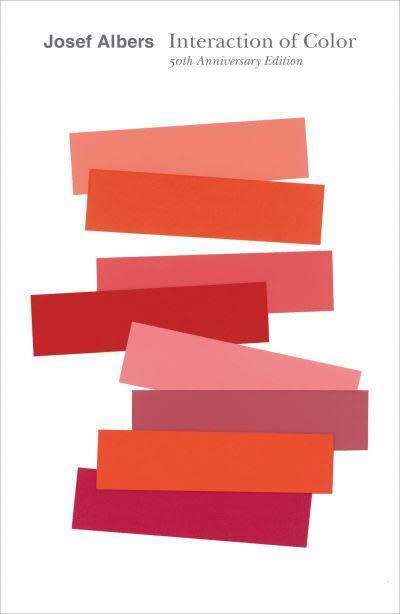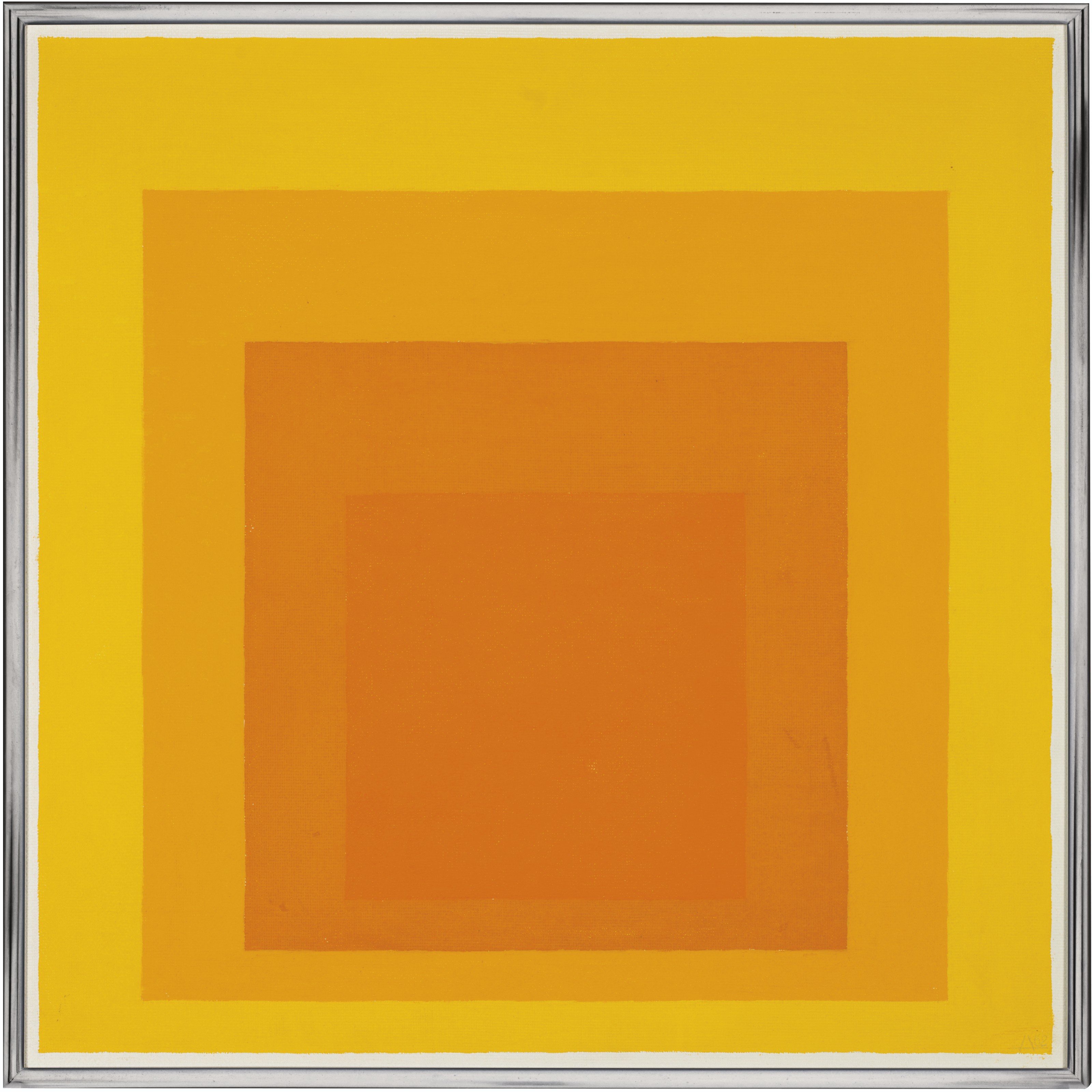 J
J
Joseph Albers (1888-1976)
In Albers’s world, color seduced, deceived, beguiled. These characteristics made color the most fascinating of art’s formal elements. Albers’s passion for color prompted his decision to launch the first full-blown course in color ever given, and certainly the first one based exclusively on direct observation of color’s nature. Color behaved. Color was magic.
His book ‘Interaction of Color’ is the record of an experimental way of studying color, and of teaching color. It is a momentous guide which compels the reader to engage in the fascinating study of interacting colors.
On the first page, Albers states: ‘In visual perception, a color is almost never seen as it really is, as it physically is. This fact makes color the most relative medium in art. In order to use color effectively it is necessary to recognize that color deceives continually”.
It is strange to think that we can be deceived so well by mere pigment; that a painting can invoke an emotion that we are unsure of, which perhaps we don’t think is due to the color. It is something Rothko was aware of - that the power of two tonal similarities sitting together can produce a visual hum.
Albers continues with his theories but places greater importance on practice before theory. For an artist like me who is not conceptual by nature, it gives me hope to continue with trial and error. His words have been my encouragement and enabled my endurance to survive successive failures.
“If one says “Red” - the name of the color - and there are fifty people listening, it can be expected that there will be fifty reds in their minds. And one can be sure that all these reds will be very different.” - Josef Albers, Interaction of Color (1963)
How personal color can become! My red or yellow or blue will be different from any one else’s, and I have no way of knowing what color they are seeing. There is no absolute and perhaps it is not possible to remember distinct colors as our visual memories are definitely weaker than our auditory. Furthermore, how many names of colors are there in language? Maybe thirty? This also adds to the confusion. It cannot be resolved like a mathematical equation.
In place of systems, Albers developed an “experimental way of studying color and teaching color”: a method based on the idea that only by observing color in the push and tug and pull of context can one begin to understand the nature of color. His color course, which he inaugurated at Black Mountain College, comprised a sequence of simple exercises, each of which isolated some aspect of color interaction in order to observe it carefully. The course reached its fullest development at Yale where the publication of Albers’s landmark “Interaction of Color” in 1963, crowned thirty years of effort.
The fundamental lesson I am still learning from Joseph Albers is the interaction between colours. How relative they are in this time of self-isolation! How unique is everyone’s vision of colour!

© 2018 The Josef and Anni Albers Foundation/Artists Rights Society (ARS), New York/DACS, London

